This French Chartreux cat has an interesting history. The Chartreux cat breed probably arrived in France from the Middle East, sometime in the 1500s. The cat, that beautiful blue-grey color similar to the Russian Blue, was actively bred by Carthusian monks near Paris.
A Cat With A Religious Background
Those in the know say that the Chartreux received its name from the Carthusian monastery known as the Grande Chartreuse. Founding of this monastery took place in 1084; its location is near Grenoble, in southeastern France.
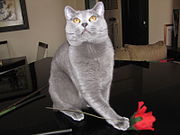
An early story claims that a party of Carthusian monks traveled to the Cape of Good Hope in South Africa in the seventeenth century. Upon their return, they brought with them a pair of these cats.
The monks developed their Chartreux cat into a strong, healthy shorthair. This cat has a sweet face and a powerful body. However, when the French imported the cat to Britain, the British did not recognize it as its own breed, but considered it the same as the British Shorthair.
This cat, however, has some subtle differences that seoarate him from the traditional British Shorthair. Then, during World War II, the Chartreux almost disappeared. Because of the work of dedicated breeders, however, this cat has been brought back as a viable, healthy breed.
Most likely, the cat’s first purpose became to work for the monks as a vermin-ridding creature. For whatever reason, the beautiful animal became part of a methodical breeding program that started in the late 1920s.
Breeding Program Started By The Leger Sisters
At that time, two sisters by the name of Leger moved from Paris to the island of Belle-Ile, off the coast of Brittany. They discovered a large population of blue-grey cats there, and from these animals they started their breeding program.
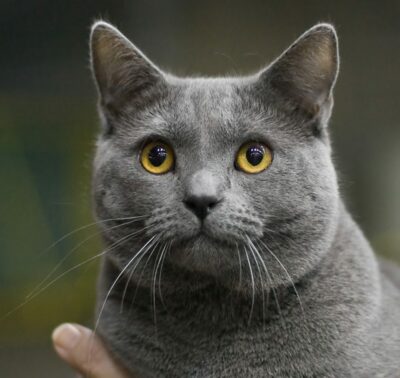
The first of these Chartreux cats debuted in France at a 1931 show in Paris. One of the offspring from this early group, with the lovely name of Mignonne, went on to win two prestigious prizes. She won the Belgian Challenge Cup, and two years later won the Paris Prix of Esthetics.
The breed was almost lost during World War II, as occurred with other breeds during that time. When the war ended, so few of the Chartreux remained that breeders had to work to “reconstruct” the line.
These few original members of the Chartreux were mated with blue-grey cats found on the street. It took until the late 1970s for this line of cats to become restored to something of its former standard. Then, no more out-crosses were allowed.
The United States began breeding these cats in 1970, with the importation of 10 of them from France. Three of these original 10 came from the Leger sisters, whose interest remained steady for over 40 years. By 1990, United States organizations accepted the cat under its own name.
What Are The Physical Characteristics?
This cat is muscular and robust. A Chartreux has massive shoulders and a deep chest, and appears heavy-boned and well-proportioned. The difference between male and female emphasuzes their size, with the male having a larger size.
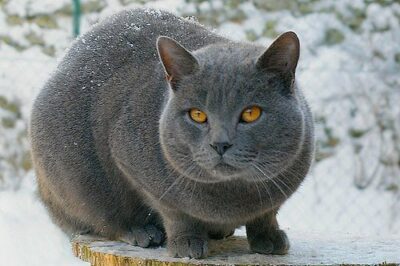
The cat’s tail, moderately long, tapers to an oval tip. The coat of the female, often longer than the American Shorthair’s, is silkier and thinner than the male’s. The coat of the male Chartreux has two layers, dense, soft, and a little woolly.
This cat has a large, broad head, though not rounded. The short and straight nose leads to a muzzle, narrow in relation to the cat’s head, but not pointed. Well-developed cheeks, powerful jaws, and a short and strong neck finish out the features of the head.
Ears, small to medium in size, set high on the head and have slightly rounded tips. Large, round eyes, quite expressive, show a color of pale gold to orange. Deeper tones receive preference. This kitty’s face has a sweet, smiling expression.
Coat colors might be any shade of grey-blue, and if silver highlights appear, those are of great importance. Rose-colored paw pads and silver-grey nose leather complete the picture.
What Is This Cat’s Temperament?
This cat is easy-going and placid, and makes a pleasant companion. Fiercely loyal to family members, it might jump to the defence of a family member in trouble. Nonetheless, it remains calm and gentle when playing, a fact that’s especially true of the male.
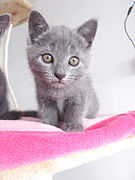
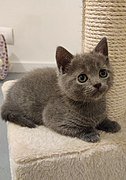
This cat will play, though not requiring as much attention as some other cats. Often, if wishing to play, this cat will bring a toy to you. You can teach your Chartreux to fetch.
Some Diverse Information
Because this cat has a placid nature, please remember not to overfeed him. As he will exercise in short bursts, he may become too calm and start to put on weight. Urging him to play regularly might offer a good idea. Hunting games can prove of value.
Moderate grooming should keep the coat in good condition. However, you might want to provide daily brushing, to avoid the formation of knots. The cat tends to shed only moderately. That woolly coat, however, might help stir up allergies in humans.
Normal weight range for the male becomes up to 12 pounds, and the same for the female. Do remember that the male does appear more massive than his female counterpart. He may grow up strong and sturdy, but won’t weigh as much as some other breeds.
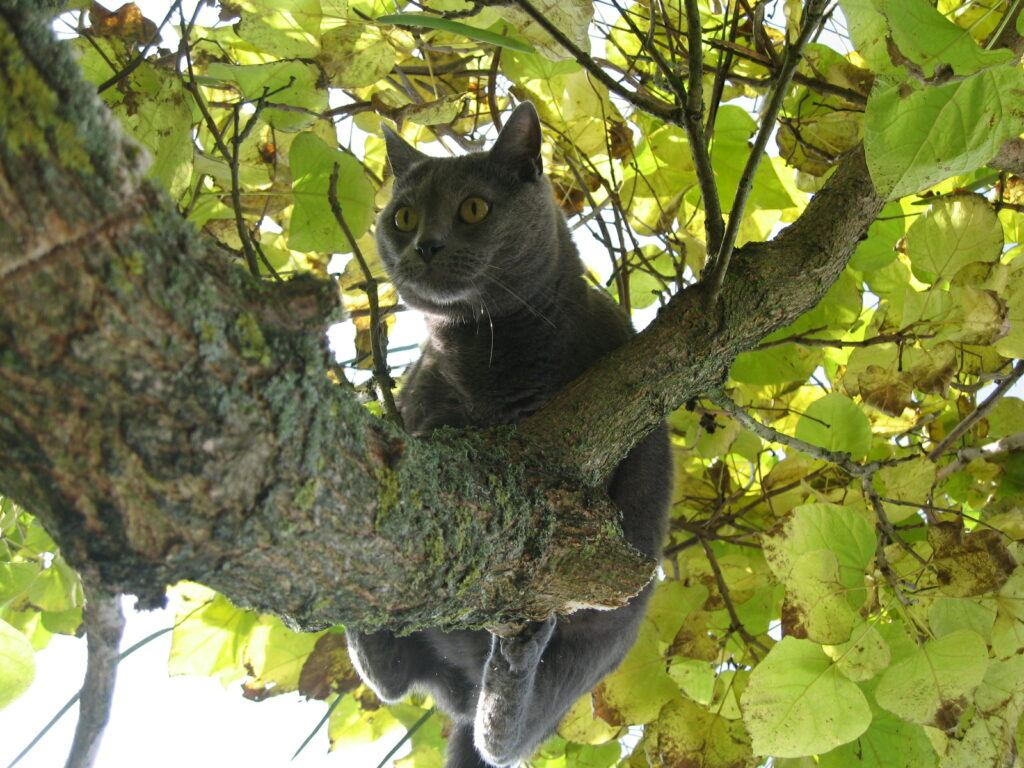
These cats have an average longevity range of 8 to 13 years. He will interact with his people, but also functions well without a great deal of attention.
This cat can now be considered somewhat rare. If you would like to have one of these cats for your family, find a breeder who raises them, and you will certainly gain a fine new family member.
References I used for this post
hillspet.com/cat-care/cat-breeds/chartreux Pollard, M. 2003, The Encyclopedia of the Cat. Parragon: Barnes & Noble Books

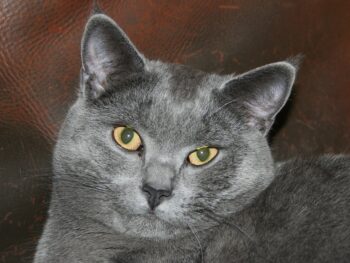
Very interesting.
Had no idea.
Joe
I learned something, too. Even us old folks can pick up a new idea here and there.